CBIS LM Core: Total Internal Reflection Fluorescence Microscope (TIRF) _1
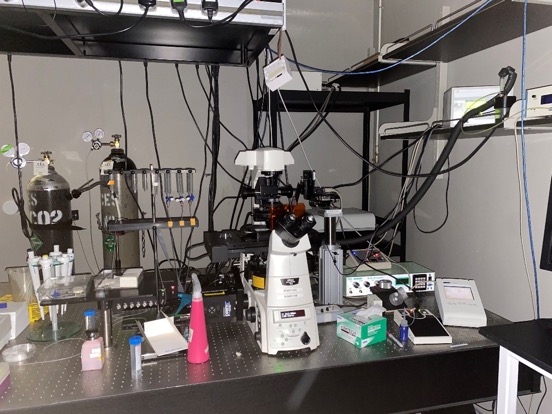
TIRF _1, iLas2
NIKON
The TIRF_1 is optimized for long term live cell TIRF imaging, to study membrane dynamics at the cell basal membrane, of actin, cellular adhesion, cell movement, vesicle, protein tracking, etc. The Total Internal Reflection Fluorescence (TIRF) Microscopes, TIRF, has a large field of applications, such as single molecule imaging, imaging secretion processes, Fluorescence Recovery After Photobleaching (FRAP, FLIP), photoactivation, etc.
Location: CBIS Light Microscopy Core (S1A #01-04 CBIS lab)
Booked CBIS equipment before? Information for First Time Users
About the Total Internal Reflection Fluorescence (TIRF) Microscope
Total Internal Reflection Fluorescence (TIRF) Microscopes, TIRF, has a large field of applications, such as single molecule imaging, imaging secretion processes, Fluorescence Recovery After Photobleaching (FRAP, FLIP), photoactivation, etc.
The special feature of TIRF microscopy is the employment of an evanescent field for fluorophore excitation. Unlike standard widefield fluorescence and laser scanning confocal microscopy, the evanescent field only excite fluorophores that are present at the bottom of the specimen adjacent to the glass water interface by about 100 nm -200nm starting from the coverslip/medium interface. This allows TIRF to gain a very high axial resolution.
The following is a comparison of the few mentioned LM techniques mentioned above.
|
Method |
Excitation |
Detection |
Optical Sectioning |
Application |
|
Widefield |
Whole volume |
Whole sample |
No |
Thin fluorescence sample |
|
Confocal |
Single beam cone illumination |
Focal plane |
350-500nm |
Optical sectioning for both thin and thick sample |
|
TIRF |
Evanescent field |
Bottom plane adjacent to coverslip |
100-200nm |
Membrane dynamics |
While TIRF microscopy requires the critical angle to establish an evanescence field that excites nearby fluorophores, users can conduct wide-field acquisition taking advantage of a tilted illumination to lower background blur that results from out of focus planes and to enhance the excitation illumination. This tilted/oblique illumination sectioning applies high incident angles but smaller than the critical angle, starting the TIRF domain, the angle of the excitation beam going through the sample is so high that the illuminated thickness is very thin (around 2μm), illustrated by the diagram below, with reference to the variable-angle epifluorescence (Courtesy of The Plant Journal).
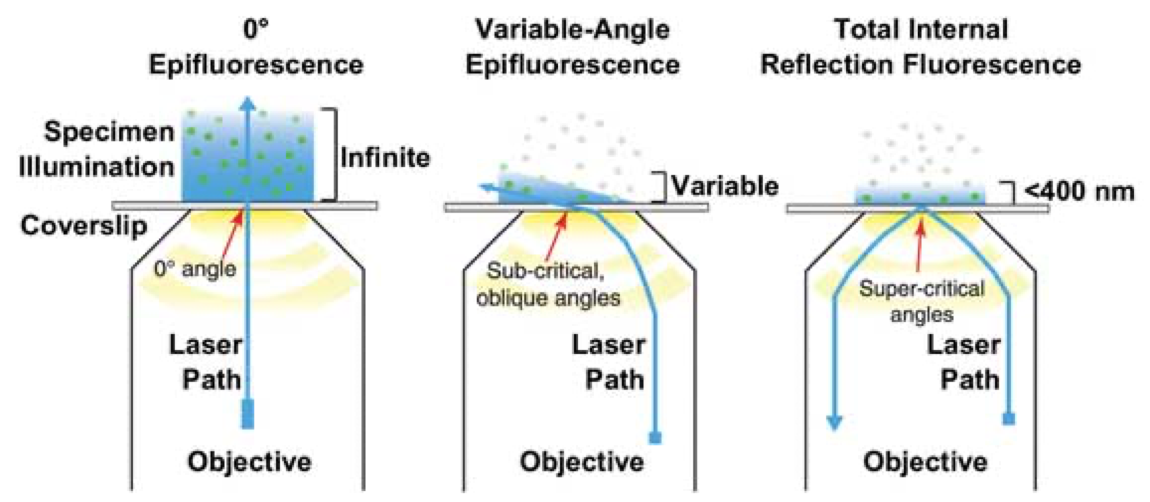
Help
- TIRF_1 Quick Reference
- Metamorph User Guide
Features
- Nikon Eclipse Ti inverted microscope, with Perfect Focus System (PFS), Nikon TI-S-EJOY
- On stage incubator with objective heater (Live Cell Instrument) with CO2 and humidity control
- Transmitted light for DIC and/or Phase contrast.
- Wide field:
- Ti-Filter blocks: Ti Filter GFPHQ, TRITC
- light Source: XCite 200DC mercury
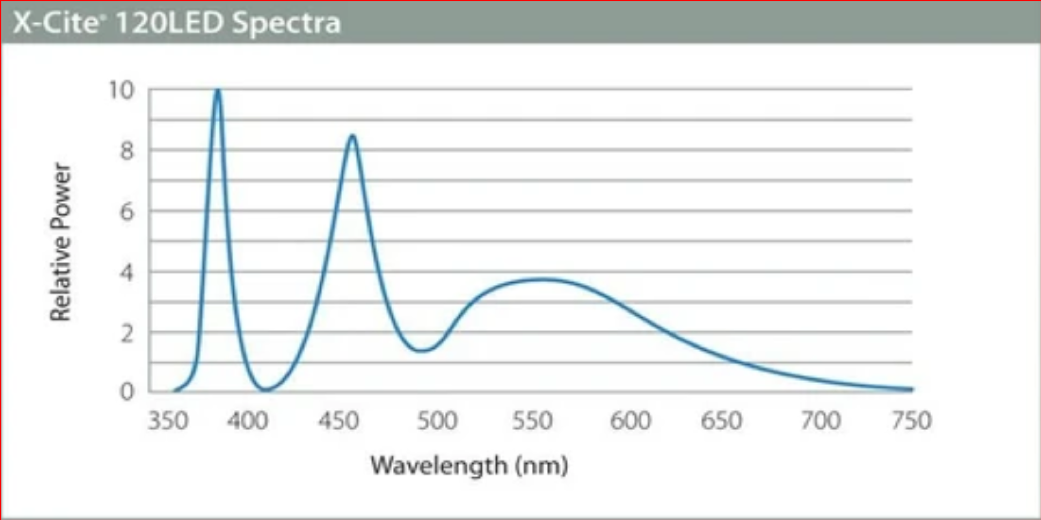
- Laser mode:
- (TIRF1) Diode module: 405nm 100mW, 488nm 150mW, 561nm 100mW, 640nm 100mW
- Dichroic mirror: Di01-R405/488/561/635
- Emission Filters: 435/40, 520/35, 609/54, 692/40
- Laser illuminator: iLas2 laser illuminator for ring TIRF and targeted laser action
- Objectives: TIRF objective: 60x/1.49 and 100x/1.49
|
Objective list |
Phase Contrast* |
DIC* |
|
Nikon PLAN FLUOR 10X/0.3 OFN25 PH1 DL |
Ph1 |
– |
|
Nikon Apo TIRF 60X/1.49 0.13-0.21 DIC N2** |
– |
N2 |
|
Nikon Apo TIRF 100X/1.49 WD0.12, 0.13-0.20, DIC N2 |
– |
N2 |
|
*refer to corresponding condenser position |
||
- Detector: Photometrics 95B back illuminated SCMOS (FOV19mm), air cooled.
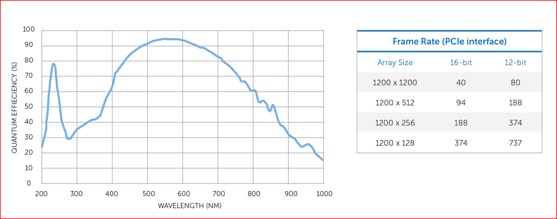
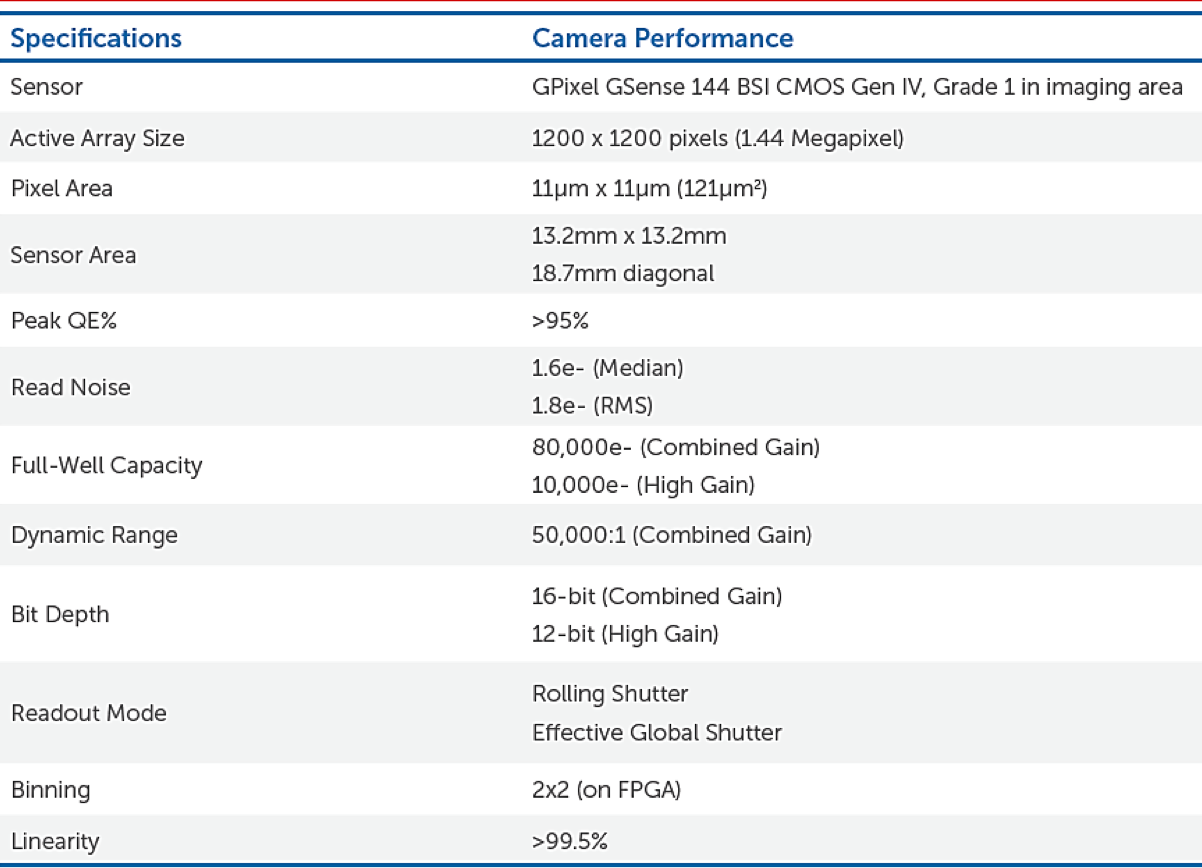
- Software: Metamorph
- Sample holders for 35mm petri dish, chamber slide, glass slide and multiple well plate.
